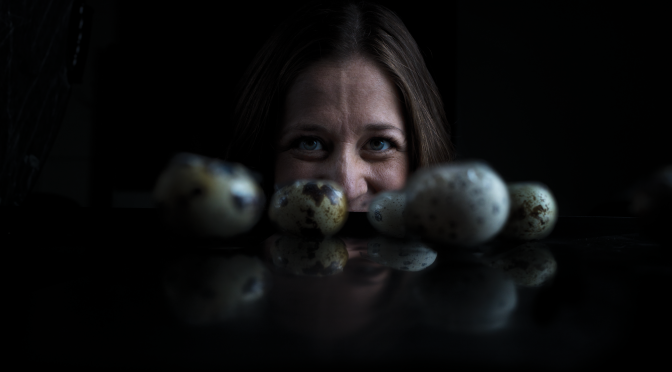Erin Bumann, D.D.S., Ph.D., M.S., is a licensed and board-certified pediatric dentist, but her research aims to solve problems far beyond what most children experience.
“Sometimes faces don’t form correctly, and these children can have issues with breathing, eating and speaking,” Bumann says.
Right now, the only treatment available for these children is invasive surgery. Bumann, however, is working to find gentler treatments in a somewhat surprising place — by studying the face and jaw structures of birds.
“The primary goal of my lab is to identify nonsurgical methods to modulate the size and shape of the bones in the face, so these children either do not need to undergo surgery or need less invasive surgery,” she says.
Searching for nature’s clues
To come up with methods for redirecting how the jaw and other facial bones grow and develop, Bumann experiments with bird models. She studies what happens when the cells that give ducks a long, broad bill are transplanted into quail models and the cells that produce the short, narrow quail jaw are transplanted into duck models.
The transplanted cells are called neural crest mesenchyme (NCM) — cells that give rise to many other types of cells, including those that make craniofacial bones and cartilage.
“Birds are an ideal model system for what we’re looking at,” Bumann says. “It’s a little bit of mad science.”
The type of work Bumann and her team engage in takes a unique set of skills — skills she is happy to help cultivate in UMKC dental students.
“These transplants are unique. You have to do them underneath microscopes,” Bumann says. “It’s great to have dental students with good hand skills to do these surgeries. And we can watch these cells migrate out and differentiate, so there are lots of things we can begin to look at.”
Bumann’s work has already indicated that the neural crest mesenchyme control the activity of osteoclasts — cells that resorb bone to shape the birds’ developing jaw structures. The hope is that Bumann’s discoveries eventually lead to human therapies to correct or greatly lessen potential craniofacial problems. Such problems can often be detected by ultrasound, so therapies might be possible even in utero, much like the way surgeons can correct or mitigate heart or spinal defects before birth.
Therapies could also be effective throughout childhood, Bumann says, as much jaw and facial development occurs after birth and through adolescence.
Craniofacial abnormalities are one of the most common birth defects requiring invasive surgery, so the benefits of alternative therapies would be great. Being able to better grow or regrow facial bones also could help some accident victims and patients with cancer.
The excitement of unanswered questions
Bumann got the research bug as an undergraduate when a professor at the University of Michigan set her to work on an unsolved mathematical function.
“I was good at math but hated it because the answer was always in the back of the book,” she says. “Why redo all these problems when we know the answer? Finding out there were these unanswered questions, and I could work on them, was exciting.”
Dental school at the University of Michigan followed, along with work in a research lab. Bumann also earned and enjoyed summer research fellowships, including one with the National Institutes of Health’s National Institute of Dental and Craniofacial Research.
Then she was off to earn her doctorate at the University of California, San Francisco. There she was introduced to the duck-quail research system, and her Ph.D. thesis was titled, “Mesenchymal Regulation of Jaw Length.”
Bumann joined UMKC in 2017, drawn to the School of Dentistry by its internationally known research on bone mass and how bone and muscle cells “talk” with each other. A key part of that research involved osteocytes, once thought to be a relatively inactive part of bones.
“This department showed that osteocytes play a large role in bone formation, aging, a whole host of functions. It’s kind of humorous that before some of the UMKC research, people thought osteocytes didn’t do anything,” she says, since they make up 90 to 95 percent of the cells in bone.
It’s still widely believed that osteocytes aren’t active in utero, Bumann says, and her group is challenging that assumption, along with seeing how the NCM cells may regulate how the osteocytes, which come from NCM, form facial bones.
“I’m trying to see if the osteocytes are playing a role in bone development, and if so, how,” Bumann says. “So we’re using different imaging systems here that I have not had access to in the past. Very fun!”
Those imaging systems include confocal microscopes, which use laser scanning and greatly increase the resolution of images; multiphoton microscopes, especially useful for 3D imaging; and micro-CT scanning, similar to hospital CAT scans but on a smaller scale with greater resolution.
Bumann also loves working with and mentoring her lab crew — currently a lab manager, a postdoctoral fellow, a dental student and three undergraduates with interest in dentistry.
“I started in a research lab in my undergraduate training and it is why I am in the position I am in today,” Bumann says. “I think it is very important to give back and mentor future generations of scientists and dental professionals.”

